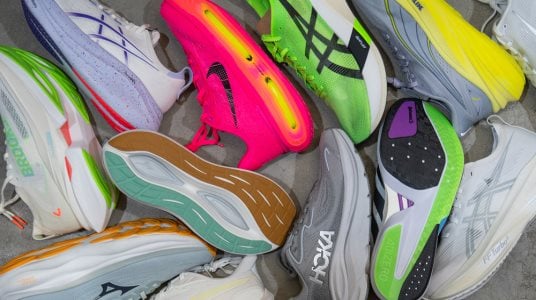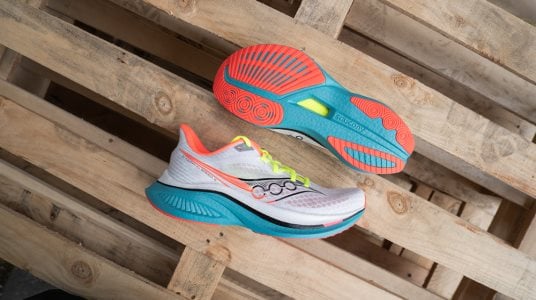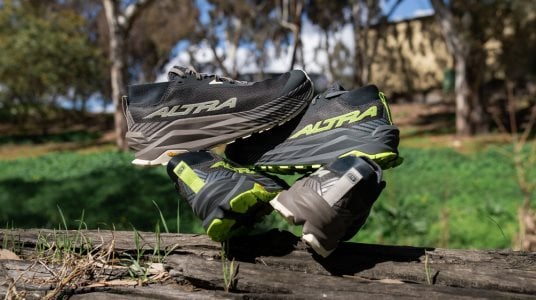How Long Should My Running Shoes Last?

These shoes should last for years right?
For many runners and walkers, durability is a crucial factor when selecting a shoe. No one wants to replace their shoes too soon, but the reality is that modern footwear doesn’t last as long as it used to. In the past, brands often quoted 1000km as the expected lifespan of a shoe, but those days are long gone. The advancements in shoe technology with softer foams, lightweight materials and enhanced comfort have made shoes better in many ways, but these benefits come at the cost of durability.
Shoe longevity also varies across different categories. This is one reason why many runners build a shoe rotation, allowing them to extend the life of their footwear while optimising their running experience. It’s worth noting that the lifespan of a shoe can vary amongst individuals with factors such as wear patterns, biomechanics and training loads all playing a role.
As a general guideline, depending on the model, daily trainers used solely for running tend to last around 500-700km before losing their cushioning and support. Performance race shoes, often referred to as “super shoes”, have an even shorter lifespan, typically maxing out at 350-400km before they lose their bounce and efficiency. While you can certainly continue wearing shoes beyond these mileage markers, they may no longer provide the same level of performance and protection.

Factors that impact shoe durability
The durability of a running shoe depends on several key factors. A shoe doesn’t need to feature all of these elements to be durable, but models that combine all three tend to have the longest lifespan.
1) Midsole density
The density of the midsole foam plays a significant role in durability. Softer foams compress faster and lose their rebound properties sooner, while firmer, more resilient midsoles hold their structure for a longer period. However, modern trends in running footwear are leaning towards softer foams, making it harder to find firmer, longer lasting options. That said, there are still several models designed with durability in mind that offer a more resilient midsole and outsole setup.

2) Outsole coverage
The outsole of a shoe serves two purposes: providing traction and protecting the midsole from wear. Shoes with a full rubber outsole generally offer better durability because they shield the midsole from direct contact with the ground. However, many brands now use partial outsole coverage to reduce weight and increase softness, which can lead to quicker wear on exposed midsole areas. If durability is a priority, look for shoes with a robust outsole design that features a generous coverage of harder wearing material.

3) Outsole thickness
In addition to coverage, the thickness of the outsole is another crucial factor. A thicker outsole provides greater protection for the midsole and takes longer to wear down, ultimately extending the shoe’s lifespan. Shoes with a minimal outsole may feel lighter and more cushioned, but they tend to wear out faster, especially on rough surfaces. You'll notice the outsole thickness to be significantly thinner on a race day "super shoe" compared to a daily trainer as the outsole contributes a lot to the overall weight of the shoe.

How can I tell if my shoes are worn out?
We often suggest using apps like Strava, Garmin or Coros where you can add shoes and track the kilometres on each shoe. It’s really easy to underestimate the mileage of your shoes, so doing this makes it easier to keep track of.
If you’re unsure if your shoes are worn out look for signs of significant wear. If the outsole tread is worn flat and smooth or if the outsole is worn down through to the midsole, it's well and truly done. It’s okay to have some minor creasing in the midsole, but if it’s significant and not rebounding back after the run it might be time to retire those shoes. Plus, if the shoes aren’t feeling as comfortable on your runs anymore, this will begin to impact your running experience and this is always a good sign that it’s time for a fresh pair.
Wrap up
While running shoe durability has declined alongside advancements in footwear technology, understanding the factors that contribute to a shoe’s lifespan can help you make informed purchasing decisions. You might also need to adjust your lifespan expectation too, if you’re used to getting over a year out of your older running shoes! Whether you’re looking for a durable daily trainer or a high-performance race shoe, considering midsole density, outsole coverage and outsole thickness can help you choose the right model for your needs. If longevity is a top priority, rotating between different shoes can help extend the life of your shoes and enhance your overall running experience.
About the author
Nathan Pope - Runner and Shoe Nerd
I'm really passionate about running footwear and how shoes can be used as a tool to get the best of your running, whether that be general fitness or performance.
My favourite event is the marathon. I feel as though the marathon is the ultimate test both physically and mentally! It requires careful planning both within the race and during the training block and it can be super satisfying when it comes together on race day.


